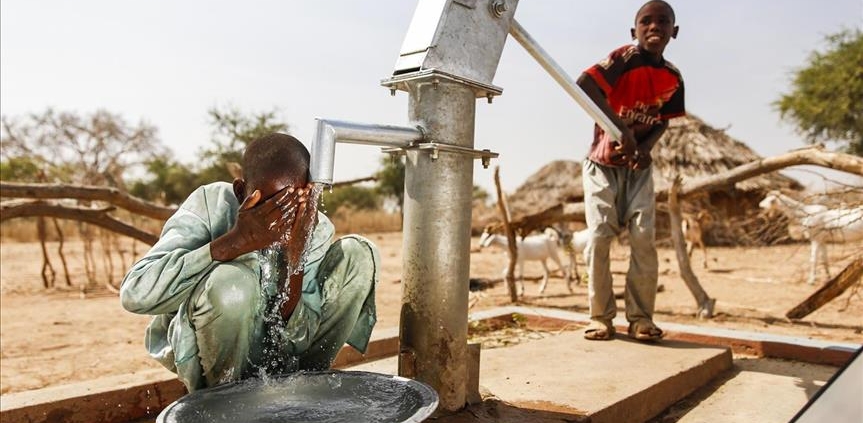Digging Wells in Africa, a ‘waste’ of money and resources?
The diverse topology of the African continent ranges from containing the world’s hottest desert, Sahara, to possessing the fertile delta of Niger, one of the longest rivers. Most of Africa is a series of ancient plateaus, low in north and west and rising in south and east. Building efficient water wells in the African continent has been a daunting task due to its wildly sundry geology. This task has been undertaken by many nonprofit organizations funded projects but building sustainable water wells have been a long-going issue.
Understanding the Process of digging wells in Africa, especially sub-Saharan Africa, is crucial in developing a perspective of how to make them sustainable and efficient for use. Since the terrain of Africa is not flat land, not all areas and countries have standardized measured water wells. The most basic type of well includes an elementary hand-dug well. These wells commonly stretch from 50 or more feet deep; built where there is an ample amount of groundwater. The other type of wells involves the use of rigging machines that cut through rocks and dirt to dig up to 150-200 deep.
The hole is then secured using a case that ensures the stability of the well and the sanitation of the water. These are cost effective but shallow. The last type of well is a precedent of why geography affects the water system in Africa. In some regions such as Central Kenya, some of the water wells need to be dug up to 900 feet deep to reach the water. This requires an abundant amount of funding and resources but can provide water for up to 3000 people.
Pitfalls of the Types of Well range from the lack of resources for the development to proper management of these wells. Hand dug wells are simple but they are dangerous to build. They require high expertise or otherwise can be life threatening for the laborers. They are only efficient when properly covered or instead the water can be highly contaminated. Moving on to shallow wells, one of the problems that arise with these low-cost digging of wells using rigs is that they dry up fairly quickly in regions that are subjected to low rainfalls such as Tanzania. Lastly, the deep wells are the most challenging and cost burdening even at expense of the amount of water they provide. These 900 feet deep water wells require a large drill, expert labors, and a sufficient amount of time.
Since these wells are exceedingly deep, the water is exceptionally heavy to be lifted from these sources manually. To counteract this problem, a motorized pump is installed; with the development of storage facilities and diesel generators, the costs are exceedingly high. But that’s not the most pivotal problem.
The International Institute of Environment and Development has estimated a figure of US$360 million that has been spent on the construction of digging wells in Africa, mostly its rural areas, but almost all of these wells are dysfunctional. The breaking down of the wells fairly accounts for a complete loss of 50,000 water points. One of the impairing reasons for this dysfunctionality is the lack of resources and expertise to maintain these water wells; local communities drastically fall short of the training and prowess required to ensure the functionality of these water points.
Most of the non-government organizations and private companies build these water wells and boreholes without proper consultation and analysis of the area and people. This ultimately results in a debilitated water supply and can sometimes prove to be detrimental for the local communities.
Water Scarcity and unclean water affect millions of women, men, and children across Africa. Clean and sufficient water has become a privilege rather than a necessity; it is rudimentary in the construction of a conscientious community. Access to a stable supply of clean water removes a heavy burden from the shoulders of local communities which produces more time to focus on building a healthy and happy life. Illnesses, deaths, hardships, and loss of time can be sufficiently minimized with the introduction of sustainable digging of water wells and their hefty maintenance.
Water Wells and boreholes are functional as they not only tap the underground water but also the aquifers which require continuous monthly maintenance and monitoring. The available quantity of surface water at any given location is more subject to seasonal fluctuations than groundwater. In many areas, the extraction of groundwater can be continued for a long period after droughts have completely depleted rivers. Groundwater sources are, therefore, more reliable sources of water in many instances.
Furthermore, groundwater, in general, is of much better quality than surface waters, due to the benefits of percolation through the ground. It is therefore often advantageous to use groundwater as a water source in developing countries.
To Build a Well in Africa that vouches for sustainability, it is of the essence to make water points after a thorough analysis of the region, people, and the land area. But the post-development measures are more detrimental for the long-term sustainability. These measures include training of local communities to teach them the accurate and apt way of operating these wells. Sanitation and maintenance communities should be set up and overviewed on a bi-annual basis.
To vanquish water scarcity for once and for all, a coordinated approach is required which thoroughly involves the local communities, non-governmental organizations, and governments to work hand in hand.




